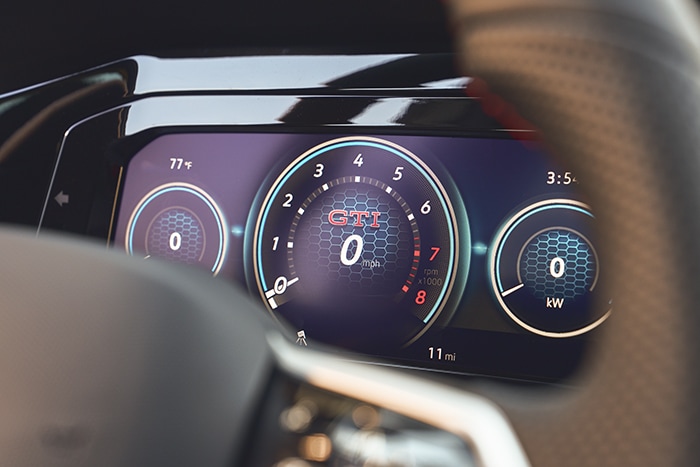
Not long ago, supercars were rolling laboratories—packed with cutting-edge technology you’d only ever see at the highest levels of motorsport or on the most exclusive stretches of asphalt. But today? The innovations once reserved for Ferraris, McLarens, and Lamborghinis are quietly making their way into your daily commute.
From adaptive suspensions to launch control, the DNA of exotic performance is now influencing the cars parked in everyday garages. This trickle-down effect is changing how we drive, how we stay safe, and how much performance we can get from a so-called “normal” car.
Let’s take a look at some of the coolest supercar tech that’s now going mainstream.
Paddle Shifters: Racecar Feel in a Family Sedan
Remember when paddle shifters were exclusive to Formula 1 and exotic brands like Ferrari? Now you’ll find them in everything from Volkswagens and Subarus to Kia Stingers. These steering wheel-mounted controls let you shift gears without taking your hands off the wheel, delivering a more engaging, performance-focused driving experience—even in your daily driver.
Launch Control: From Supercar to Sport Compact
Once the domain of elite exotics like the Nissan GT-R or Lamborghini Aventador, launch control is now a common feature in sporty sedans and hatchbacks. Press a few buttons, hold the brake, floor the gas, and when you're ready—release and launch with optimized grip and acceleration.
It’s the kind of tech that used to be track-only but now comes baked into cars like the Hyundai Elantra N and Toyota GR Corolla.
Carbon Ceramic Brakes: Stopping Like a Supercar
These high-performance brakes, once found only on hypercars like the Porsche 918 Spyder, are now available on performance trims of mainstream vehicles. While still optional (and pricey), carbon ceramic brakes deliver fade-free stopping power, lower unsprung weight, and longer life under extreme use.
If you drive hard—or just want the bragging rights—they’re a seriously cool option.
Active Aerodynamics: More Than Just a Wing
Supercars pioneered active aero systems—think retractable spoilers and adjustable diffusers that change shape based on speed, braking, or cornering.
Now, we’re seeing entry-level sports cars and even luxury SUVs incorporate similar tech for better performance and fuel efficiency. Cars like the Toyota Supra, Audi RS5, and even some electric vehicles use adaptive aero to improve handling or range.
Adaptive Suspension: Luxury Meets Performance
A staple in exotics like the McLaren 720S or Ferrari 488, adaptive suspension systems adjust damping in real-time based on road conditions, drive mode, and even your steering input. Today, this once track-only feature is showing up in Mazda CX-90s, BMW M340is, and even trucks.
The result? Comfort on the highway, control in the corners, and one car that adapts to your every need.
Driver Modes: From Track to Eco in a Twist
Supercars are famous for their selectable drive modes—Race, Sport, Corsa—that reconfigure the throttle, suspension, and exhaust. This same concept has gone mainstream, letting you toggle from fuel-sipping efficiency to spirited driving with a twist of a knob or press of a button.
Even family cars like the Toyota Camry or Honda Accord offer selectable modes to change the feel of your drive—something that was exotic-only a decade ago.
Digital Dash Displays: From F1 to Factory Tech
Supercars were among the first to ditch analog gauges in favor of fully digital driver displays, inspired by Formula 1 cockpits. Now, digital clusters are showing up in everything from Volkswagens and Fords to Hyundais and Nissans—often with custom layouts that change with drive mode.
They’re stylish, functional, and another clear example of exotic influence.
Turbocharging & Downsizing: Efficiency with a Side of Power
While exotics used turbos to push limits (think McLaren’s twin-turbo V8s), everyday cars are now embracing smaller, turbocharged engines to balance fuel efficiency with performance.
That little 1.5-liter turbo in your daily driver? It may have more in common with a Ferrari than you'd think—at least in concept.
Lighting Tech: Laser Focused and Super Sharp
Supercars have long featured matrix LED and laser lighting systems for superior visibility and design. Now, similar tech is lighting up the roads in vehicles like the Mazda CX-5, Toyota Crown, and even pickup trucks.
Not only do these lights look sharp, but they also improve safety and visibility, automatically adjusting for oncoming traffic or curves.
So, Why Does It Matter?
Because we’re living in the golden age of car tech. The boundary-pushing innovation once exclusive to exotics is now shaping the cars we drive every day. That means safer, faster, more connected vehicles—without needing a seven-figure budget.
Whether it’s a subtle nod to the racetrack or a full-blown performance feature, exotic car tech is changing the way we think about “normal” cars—and that’s a win for every kind of driver.